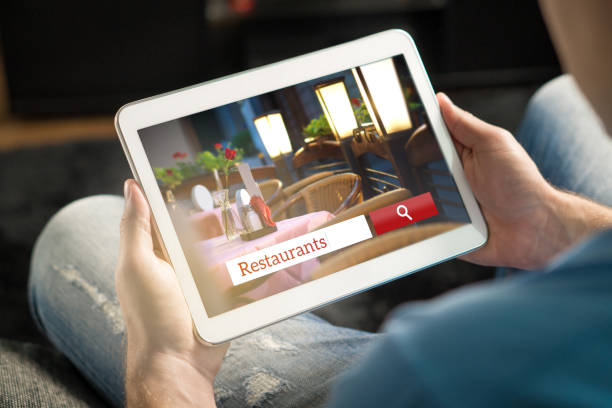
In today’s dynamic business landscape, restructuring initiatives have become imperative for companies to navigate challenges and seize opportunities effectively. Whether spurred by financial strains, market shifts, or regulatory demands, restructuring demands a strategic approach tailored to each business’s unique circumstances. Accountants in Melbourne play a pivotal role in this process, offering invaluable expertise in identifying restructuring needs, formulating strategic plans, and overseeing seamless implementation.
Let’s delve into how these financial experts drive business restructuring initiatives, shaping the path to sustainable growth and success.
1. Identifying the Need
The need for restructuring initiatives can be driven by a variety of factors. A company may face financial distress, need to adapt to shifting market trends or comply with new laws and regulations. Restructuring can also be a way to increase profitability by reducing costs and increasing efficiency.
A team of business accountant Melbourne can help businesses identify the need for changes and determine which strategic approach will work best. They can also develop a detailed plan to carry out the restructuring process, including asset sales and acquisitions, downsizing employees, and implementing technology solutions. They can also help to engage stakeholders, provide training and support, and manage the transition and disruptions.
Restructuring can increase a business’s competitiveness by allowing it to focus on core strengths and embrace new technologies that can improve efficiency and enhance the customer experience. It can also make it easier to attract investment by lowering risk and establishing an attractive valuation.
Restructuring can also be used to reduce debt or renegotiate debt terms, and it can provide an opportunity for companies to acquire competitors. A merger or acquisition can offer the benefits of increased market share, economies of scale, and synergies in operations. It can also be a good way to diversify and enter new markets. Another option is to spin off a business unit as its own standalone entity that you still retain a stake in, which can be useful for achieving high valuations.
2. Developing a Strategy
It is crucial that your company develops a strategy to guide the restructuring process. A strategy is a framework that allows you to accomplish your business goals in the face of uncertainty. Having a strategy also creates a common thread that unites all employees to strive toward success.
A business’ structure may require restructuring if it has a high debt load, is inefficient, or lacks market positioning. Other reasons include a change in industry trends, new technology, or new competitors. These changes can be incredibly complex, and you need to have a team of trusted advisors to help you navigate them.
Another key component of a restructuring strategy is developing a contingency plan. This is a road map of how to handle speed bumps and avoid getting completely derailed from your goal. For example, if a major project is taking longer than expected, you might need to consider a delay in the overall timeline or finding an alternative solution for the problem at hand.
One of the biggest challenges in a business restructuring is allocating costs. This involves assigning each cost item to its corresponding department or cost center. For example, if your company consolidates departments as part of its restructuring, you might need to allocate severance payments, relocation expenses, or asset impairment costs. These costs must be properly allocated so they accurately reflect the financial impact of the restructuring.
3. Implementation
Restructuring is a time-intensive process, so it’s essential to plan and budget for the effort. The business budget helps to communicate financial targets to staff and ensures that cost savings are realised. It also helps to benchmark outcomes and hold departments accountable.
Restructures can be triggered by a variety of reasons, including poor performance metrics, strategic shifts in direction, or a need to unlock trapped value. They can involve refocusing strategy, streamlining operations, or divesting assets and acquiring capabilities to achieve synergies. For example, a company might divest its commercial supply division to focus on consumer sales and boost profit.
When allocating restructuring costs, it’s important to consider the impact on a company’s capital structure and cash flow. This may include examining whether the cost can be deducted immediately or whether it should be capitalised and amortised over the course of the restructure. It’s also important to consider tax considerations, as different jurisdictions have varying regulations on the deductibility and timing of certain costs.
Restructuring can be a time-consuming process, so it’s essential to track and monitor progress on a regular basis. By regularly reviewing and updating the allocation methods, companies can make sure that they are capturing all relevant costs and achieving their budget goals. It’s also important to keep the lines of communication open with employees and address any snags or delays as they arise.
4. Monitoring
In a business restructuring, it’s important to regularly monitor the progress and impact of the changes being implemented. By regularly highlighting wins for the company and making small course corrections as necessary, the accountant can ensure that the restructuring is on track to achieve its goals.
Another important aspect of monitoring is ensuring that costs are allocated properly. This involves identifying and categorising costs, determining timing, allocating shared services and corporate costs, addressing legal obligations, and considering tax implications. Failure to do so can result in inaccurate financial reporting and other costly issues for both companies involved.
Restructuring can be a strategic move by a company to improve efficiency, cut costs, or better position itself in the market. It can also be a way to prepare for a sale, merger, buyout, or change in overall goals. For example, Honda recently began a large-scale organisational restructuring to shift its focus to recurring service sales and launch 30 new electric car models globally by 2030.
For some businesses, restructuring may be the last effort to retain solvency and is aimed at reducing debts by negotiating with creditors, selling off non-core assets, or even filing for bankruptcy. In such cases, the company’s restructuring efforts are usually focused on the elimination of inefficient processes and departments. This can include merging departments, streamlining operations, and implementing cost-saving initiatives.
In conclusion, the involvement of accountants in Melbourne is instrumental in driving successful business restructuring initiatives. From identifying needs to devising strategies and executing plans, their expertise ensures companies navigate complexities with precision. To delve deeper into accounting standards and practices relevant to restructuring efforts, click here.
Embrace the guidance offered by professionals and regulatory bodies alike, as you chart your course towards resilience and prosperity in an ever-evolving business landscape.











